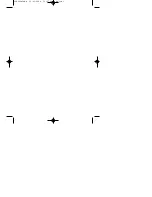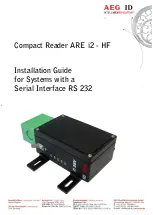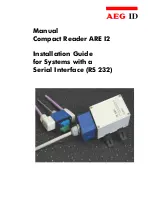
55
S
I
C
K
O
p
t
i
c
-
E
l
e
c
t
r
o
n
i
c
B
a
r
C
o
d
e
S
c
a
n
n
e
r
s
4
O p e r a t i o n
DIAGNOSTIC READING DATA
The CLV bar code scanner is able to continuously generate diagnostic reading data and integrate this into the data output string for evaluation by the user. Diagnostic
reading data is transmitted in the header, separators and/or terminator of a data string. The user is able to define the content of each of these elements of the data
string in the Parameterization Mode (see Section III, “Parameterization: Host Interface: Output Format”). Table 4-1 defines the statistics available to the user and pro-
vides information on the output location of each statistic. Figure 4-3 shows how the statistics are calculated.
Description
Abbre-
Function
Determination
Transmission
Figure
viation
in block
Error Status
ST
• Indicates cause of unsuccessful read diagnosed
For every
Separator
–
by CLV. Eight different error status codes
bar code label
are available:
in a single
ST=A:
Programmed maximum number of codes
reading gate
has been exceeded
ST=0: Good
read
ST=1:
Wrong check digit
ST=2: No
read
ST=3: System
error
ST=5:
Number of multiple reads specified have
not been fulfilled
ST=6:
Master unit does not identify the proper
number of slave units
ST=7:
Source of bar code data is auxiliary input
via auxiliary interface
ST=8:
Data loss in networking operation
ST=9:
Match code filter stopped transmission
• The error status is a criterion for the insertion of
code error strings (space savers) in the host
interface data string.
Code
I D
• Provides code letter for assignment of bar code
–
Identification
contents to type of code symbology from which
it comes, e.g, “a”=Codabar
Code Length
CL
• Indicates number of digits of decoded bar code
–
contents Serves to indicate appropriate data field
in data string; permits further data processing,
even with free code lengths
Code Position
CP
• Indicates position on scanning line at which bar
3-2
code label is detected (position of first dark bar)
Numerical values from 000 to 100 are used to
designate relative position Resolution is 10°.
• Line scanner example: several bar code labels
arranged consecutively in a row receive different
position designations. Codes with identical
contents can therefore be detected as non-
redundant and be output
Code
CS
• Indicates total number of all scans in which iden-
4-4
Reliability
tical bar code contents were detected. Indication
of trend of reading reliability at reading station
• Practical application: direct on-line monitoring of
individual reading stations
Code
CK
• Indicates maximum number of consecutive
4-4
code quality
















































